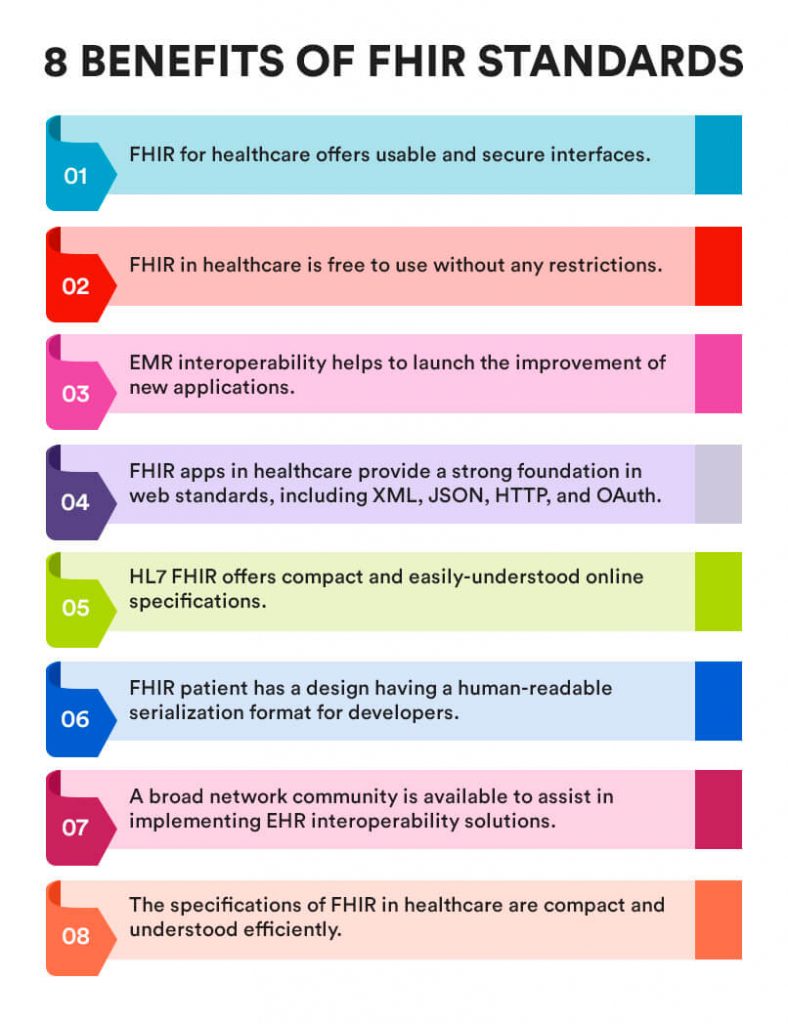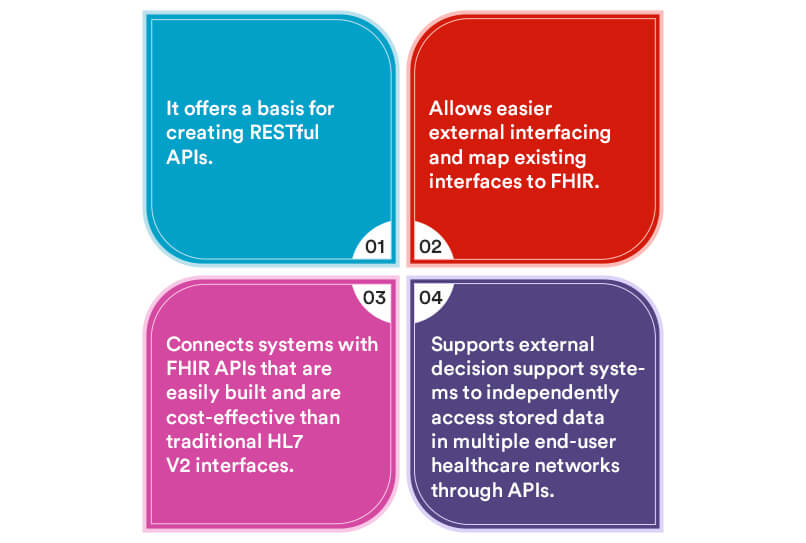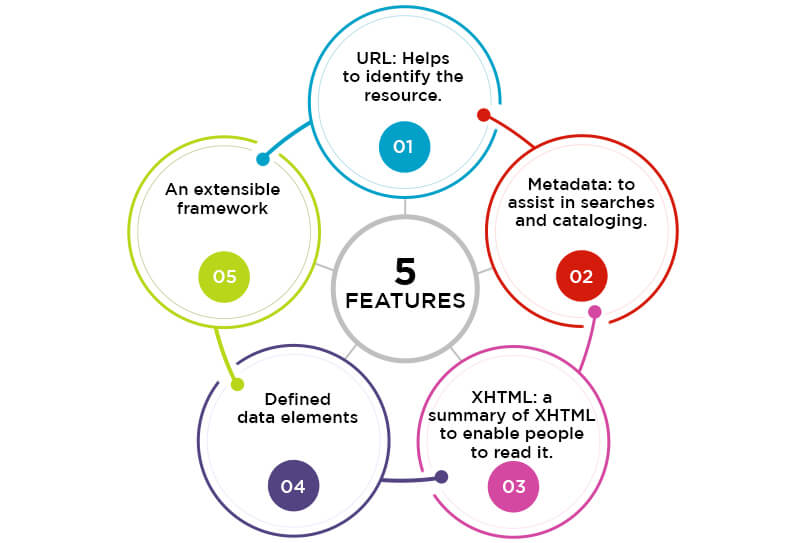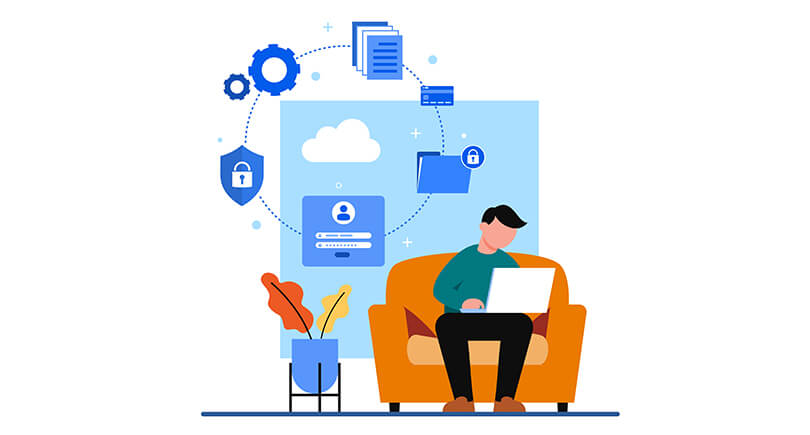With telehealth and other digital technologies gaining importance, another term you probably hear about is FHIR. FHIR (Fast Healthcare Interoperability Resources) in healthcare is a standard framework created by HL7 to allow data exchange between healthcare applications easily and quickly. Cloud-based FHIR healthcare consists of the best features of HL7’s other standards, including V2, V3, and CDA product lines. FHIR is considered an interoperability standard that promotes the exchange of electronic health records. The main aim of FHIR in interoperability is to address the emerging digitization of the healthcare sector and make medical records easily accessible for patients. FHIR organization focuses on implementing standards, and it offers a consistent mechanism, which can be helpful even for administering integrated care and remote patient monitoring. FHIR in healthcare combines the best features of previous data exchange standards into a common specification. At the same time, it is flexible for meeting the needs of many use cases in the health industry.
Why is FHIR important?
Healthcare interoperability solutions are always required to enable smooth patient medical records exchange and integrate healthcare automation. The FHIR standard helps healthcare IT developers easily build applications for EHRs and exchange and retrieve data from other applications faster. FHIR in interoperability was initially created as an experimental project for HL7 software product development, but it gained support from competitive EHR vendors. Eventually, FHIR in healthcare became a standard to integrate apps with portals, EHRs, health informatics management, health IT systems and contribute to practice management and healthcare management. FHIR solutions are web-based technology for flexible, fast, and cost-effective development. FHIR in healthcare can introduce internet-based experiences that result in good patient experience and increase patient engagement. EMR interoperability can also make those wearable devices and monitoring gadgets worthwhile from a clinical perspective.
Benefits of FHIR standards

FHIR interoperability enables health informatics to be accessed safely by healthcare providers and patients. Besides this, the other benefits of interoperability in healthcare are:
- FHIR for healthcare offers usable and secure interfaces.
- FHIR in healthcare is free to use without any restrictions.
- EMR interoperability helps to launch the improvement of new applications.
- FHIR apps in healthcare provide a strong foundation in web standards, including XML, JSON, HTTP, and OAuth.
- HL7 FHIR offers compact and easily-understood online specifications.
- FHIR patient has a design having a human-readable serialization format for developers.
- A broad network community is available to assist in implementing EHR interoperability solutions.
- The specifications of FHIR in healthcare are compact and understood efficiently.
What are FHIR resources?
Resources form the building blocks of FHIR in healthcare. Resources are nothing but all exchangeable content in interoperability solutions. They create commonly used groupings like lists and documents. Interoperability software is flexible, easy, and simple to implement, and it focuses on the implementation and utilizes the latest web technologies for supporting rapid adoption. Fast healthcare interoperability resources define the information contents and structure for the core information shared during implementations.
What is an FHIR profile?
A resource profile of FHIR in healthcare is the use of one or more FHIR resources for a specific use case. It consists of three main parts:
1. A metadata section: represents the profile and enables searching of the registry
2. Structure: determines and illustrates how a resource or data type can be utilized.
3. Extension definitions: establishes extensions that can be further used in structures.
An FHIR profile may include constraints on resources and data types, thereby controlling the usage of terminology in extension definitions. It is analogous to an implementation guide for any specific use case. Resources can be assigned a URL for easy identification, similar to a web page. If you would like copies of the resource to point to the original always, a URL inside the resource is a must-have.
How does FHIR differ from other interoperability standards?
You may wonder why FHIR in healthcare is more important than other interoperability standards regarding health analytics. The main difference between FHIR in healthcare and different popular interoperability standards are simplicity and flexibility. FHIR combines the best features of previous data exchange standards into a common specification. Every application of the HL7 FHIR standard needs a resource approach to the information model like medication, procedure, or immunization. FHIR in healthcare is highly flexible and easy to implement. It supports four information exchange methods, including REST, the software architectural style that is the basis for the worldwide web.
Applications of FHIR in healthcare

FHIR has several applications in the healthcare industry. Let’s have a quick look:
- It offers a basis for creating RESTful APIs.
- Allows easier external interfacing and map existing interfaces to FHIR.
- Connects systems with FHIR APIs that are easily built and are cost-effective than traditional HL7 V2 interfaces.
- Supports external decision support systems to independently access stored data in multiple end-user healthcare networks through APIs.
Features to be included in FHIR resources

The FHIR resources should include these key features:
- URL: Helps to identify the resource.
- Metadata: to assist in searches and cataloging.
- XHTML: a summary of XHTML to enable people to read it.
- Defined data elements
- An extensible framework
Final takeaways about FHIR
- FHIR interoperability software is the acronym for Fast Healthcare Interoperable Resource.
- FHIR unites the best features of HL7 V2, HL7 V3, and CDA when leveraging the latest web services technologies.
- The major components of FHIR in healthcare are known as resources that can be combined for addressing administrative and clinical issues. These resources can be extended and adapted to provide a more manageable solution to the healthcare demand.
- FHIR is useful while leveraging the latest web standards and focusing on implementation.
Conclusion
FHIR in healthcare is an essential improvement from previous standards, but it must be implemented consistently. OSP can create FHIR interoperability solutions that are practical and cost-efficient while eliminating the common barriers to interoperability. We understand the need to integrate HL7 FHIR and can help you reach great heights with our customized software solutions. OSP can develop HIPAA-compliant FHIR interoperability software to enable you to improve your healthcare practice.
OSP is a trusted software development company that delivers bespoke solutions as per your business needs. Connect with us to hire the best talents in the industry to build enterprise-grade software.

How can we help?
Fill out the short form below or call us at (888) 846-5382
Looking for software solutions to build your product?
Let's discuss your software solutions for your product in our free development acceleration call!
Get In Touch arrow_forwardDiscuss Your Project Handover with a team of expert Book a free consultation arrow_forward
About Author

Written by Riken Shah linkedin
Riken's work motto is to help healthcare providers use technological advancements to make healthcare easily accessible to all stakeholders, from providers to patients. Under his leadership and guidance, OSP Labs has successfully developed over 600 customized software solutions for 200+ healthcare clients across continents.

















